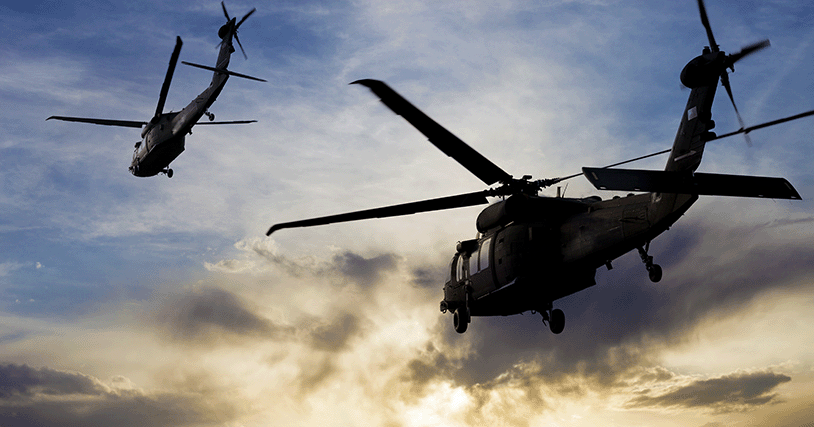At Quad A Conference, Focus is on the Future Vertical Lift Vision regarding FLRAA, FARA and Air Launched Effects (ALE)

It’s natural to only think of the U.S. Army as “boots on the ground” operations. But tens of thousands of Active Duty service members and Reservists are Army Aviators. Their mission set is different from the U.S. Air Force (USAF), because the Army deploys a blend of both attack planes and logistics and support planes and helicopters; massive vehicles that airlift tanks, gear and personnel. Landing spots also differ. While the USAF relies on well-defined landing spots, Army Aviators must be able to take off and land in tightly confined and congested spaces, like jungles and urban settings.
Much of the talk at this year’s Army Aviation Association of America (Quad A) conference in Nashville focused on the Department of Defense (DoD) Future Vertical Lift program, a plan to develop a family of next generation military aircraft (primarily helicopters). Within Future Vertical Lift are two distinct development programs, the Future Long Range Assault Aircraft (FLRAA) and the Future Attack Reconnaissance Aircraft (FARA). These programs are already well underway. For instance, Bell and Lockheed Martin designed and built the V-280 Valor, an aircraft with more than twice the speed and range as current weapons systems and a proven long-range maneuver solution. The SB-1 Defiant, built by Sikorsky and Boeing, is an advanced utility helicopter and air assault weapon system that can fly low and fast, land quickly, and deliver soldiers to the objective area.
In discussions at Quad A, there was significant focus on how to deploy secure, resilient satellite communications (SATCOM) on these Future Vertical Lift aircraft. A top DoD priority is to have resilient wideband multi-megabit SATCOM capabilities in contested, degraded and operationally-limited environments – including wherever its aircraft fly.
The implications of adding SATCOM to Future Vertical Lift aircraft is significant. One example is video surveillance. In the past, aircraft have not had the ability to transmit video from the battlefield. Instead, aviators captured footage and brought it back to the Command for viewing. Yet today, SATCOM technologies can transmit data and HD video simultaneously in real time, improving a Commander’s ability to make crucial and strategic decisions for warfighters on the ground and in the air.
Since these aircraft are long-range solutions, they require a Beyond-Line-of-Sight (BLoS) SATCOM systems; the SB-1 Defiant also needs the ability to transmit through two coaxial sets of rotors (blades). BLoS on the move communications play a major role in connecting forces out-of-theater.
With battlegrounds extending to space and adversaries jamming satellite signals to interrupt military communications, greater resiliency depends on multi-orbit communications capabilities, where SATCOM links switch seamlessly between geostationary (GEO) and middle earth orbit satellites (MEO) as well as with low earth orbit (LEO) satellites to recover from jamming or fault issues — without users having to do anything.
The 2 ½ day Quad A event offered an ideal chance for us to connect with Army Aviation leaders and manufacturers and share specifics on how SATCOM technologies can be added to and adapted to fit a variety of rotary wing platforms, including both V-280 Valor and SB-1 Defiant, to achieve the secure and resilient communications capabilities that will be critical to the Future Vertical Lift vision and mission success.